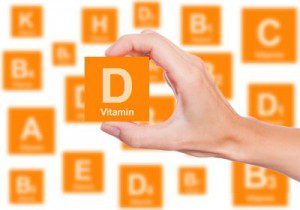By Deane Alban
Contributing Writer for Wake Up World
Vitamin D is close to being nature’s cure-all. It’s a fantastic immune system booster that’s been found to be protective against cancer, diabetes, heart disease, high blood pressure, osteoporosis, Multiple Sclerosis and Alzheimer’s.
Having adequate vitamin D levels has many brain benefits. It can lift your mood, banish depression, improve memory, and increase problem-solving ability. Inadequate levels may contribute to the depression many people feel in the winter.
Now that the warmer weather is here (in the northern hemisphere), you can soak up the sun to replenish your much-needed stores of vitamin D, the sunshine “vitamin”. The usual rule of thumb is 20 minutes of sun exposure on large surface areas of your body, such as arms or legs, twice a week for adequate vitamin D formation. But just being outside in the sun is no guarantee you’re actually manufacturing vitamin D.
Here are five things that affect the process:
Factors Affect Vitamin D Formation
[pro_ad_display_adzone id=”110028″]
1. Sunscreen
If you are outside in the sun but wearing sunscreen, you won’t manufacture much vitamin D. To ensure adequate Vitamin D uptake, make sure you get some sun without sunscreen.
[For more information on the effects of sunscreen on Vitamin D uptake, please see BURN: Health Impacts of Sunscreen Found to be Worse Than UV Damage!]
2. Latitude
If you live in the United States, draw a line from Los Angeles to Atlanta. If you live north of this line, the sun’s rays are too weak to trigger vitamin D production most of the year, except during the summer.
Time for some fun science!
Here’s a way to tell if the sun’s rays are strong enough to potentially stimulate vitamin D formation: Go outside, stand in the sun, and look at your shadow. The more direct the sun’s rays are, the shorter your shadow will be. A good rule of thumb is that if your shadow is your height or longer, the sun’s rays strike at too great an angle to promote vitamin D formation.
3. Skin Color
Our different skin tones evolved depending on how much sunshine our ancestors were exposed to. Light-skinned people from very northern areas (or very southern areas, in the southern hemisphere) evolved to utilize sunshine more efficiently. If you have dark skin, you may need more sun exposure to get adequate exposure levels, up to one hour a day.
4. UV Index
UV index is affected by season, time of day, cloud cover, air pollution, altitude, and even your surrounding surface. Whether you’re outside in the snow, at the beach, or picnicking on a lawn can affect how much UV radiation is reflected back at you by up to 40 fold.
It is only when the UV index is greater than 3 that the needed UVB wavelengths are present in sufficient amounts to produce vitamin D. Check a site like Weather.com to find your current local UV index before taking your next vitamin D “sun bath”. Complete cloud cover reduces UV energy by 50%; shade reduces it by 60%. UVB radiation does not penetrate glass, so exposure to sunshine indoors through a window does not produce vitamin D.
5. Bathing
It takes a while for your skin to fully absorb all of the vitamin D it makes in the sunshine. About 50% of the total formation occurs within the first few hours so try to hold off showering at least until then. Otherwise your new vitamin D will literally go down the drain. Remember that the “20 minutes twice a week” rule of thumb rarely holds true. Here’s a link to a calculator that takes most of the above factors – latitude, skin color, altitude, sky conditions and such – into account. It estimates how many minutes of sun exposure you need to produce 25 mcg (the equivalent of 1,000 International Units) of vitamin D.
The Next Step — Know Your Levels, Supplement Accordingly
It’s estimated that 80-90% of adults in North America are vitamin D deficient. Vitamin D deficiency symptoms — including muscle pain, weak bones, low energy, lowered immunity, depression, mood swings, and sleep problems — can be mistaken for many other health problems.
There are five forms of vitamin D — D1 through D5. Most experts agree the most effective form is D3. Some foods, like milk, are fortified with the D2 form and mushrooms naturally contain D2. But this form is not very well utilized in the body. By far the best “food source” of D3 is cod liver oil. Not that most of us would call this “food”! Fatty fish like salmon and sardines contain some D3.
[Click here for more suggestions on foods that contain Vitamin D].
If your level is found to be low and you can’t bring it up (and keep it up year round) by increasing your dietary and sun exposure, you’ll need to supplement. The only way to know for sure if you need vitamin D supplementation is to have a blood test to check your 25-hydroxy level. You can see your doctor to order the test or you can purchase a vitamin D test online.
Lastly, when you choose a vitamin D supplement be sure to buy from a reputable company you can trust. Do your homework. Last year a study on 55 brands of vitamin D supplements found they contained between 9% – 146% of the amount that was listed on the label!
Updated August 2014
Previous articles by Deane:
- Five Common Food Additives That Can Damage Your Brain
- Food Scams and Myths: Why Quality Matters
- The Alarming Truth About Supermarket Meat
- 18 Choices You Make Every Day That Keep You Up at Night
- Can’t Get the Hang of Meditation? Try This Instead
- Is Your Olive Oil Lying About Its Virginity?
- Stress, Telomeres, and the Secret to Prevent Aging
- Zapped: Your Brain on Electromagnetic Fields (Infographic)
- 20 Common Medications That Can Cause Memory Loss
- 5 Common Food Additives That Are Toxic to Your Brain
- Coconut Oil Cures Alzheimer’s Disease: Truth or Wishful Thinking?
- 6 Common Habits that Rob You of Essential Brain Vitamins
- The ABCs of Vitamins for Memory and Brain Health
- Eat Your Way Smart With a Brain Food Diet
Deane Alban holds a bachelor’s degree in biology and has taught and written on a wide variety of natural health topics for over 20 years. Her current focus is helping people overcome brain fog, “senior moments”, and other signs of mental decline now, and preventing Alzheimer’s and dementia in the future.
The human brain is designed to last a lifetime, but modern life takes a greater toll on the brain than most people realize. Deane teaches the best ways to keep your brain healthy and stay mentally sharp for life at her website BeBrainFit.com.
[pro_ad_display_adzone id=”110027″]








